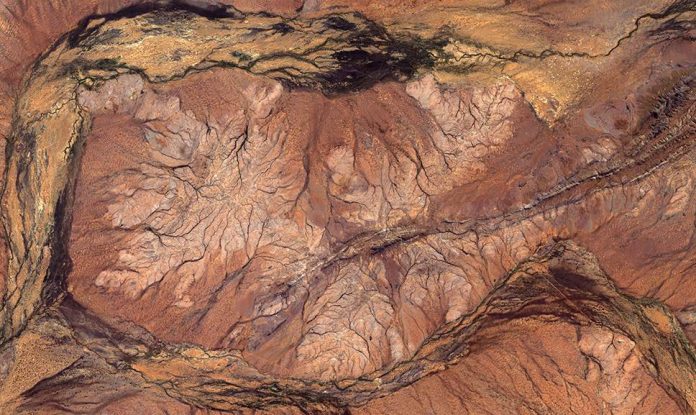Researchers have found 3.5 billion-year-old fossilized microbial deposits in Western Australia, which could provide clues on the emergence of life on Earth — and other planets.
Writing in the journal Nature Communications, Australian scientists explained how they found biological signatures in fossils that represent evidence of life on land 600 million years older than previously known.
The researchers were working at a very remote rock formation site called the Pilbara Craton in Western Australia – a site which, if abundant in little else, has provided a lot of very useful evidence of early life on land.
Having collected rock samples in the outback location, University of New South Wales scientist Tara Djokic said she had found a “smoking gun” of proof that the area once had a volcanic hot springs system. Deposits of geyserite, a material only found in a hot springs areas, were the key.
Also in the samples were what the researchers called “a suite of microbial biosignatures indicative of the earliest life on land.”
This includes multiple “textures” that represent signs of life, such as stromatolites described as “layered rock structures created by communities of ancient microbes.”
Djokic added that bubbles found in the rocks, although mysterious, were likely trapped within a sticky substance associated with microbial activity, rather than gas, given that they were preserved for billions of years.
The team’s work represents “a geological perspective saying actually, really early on we’re already seeing life on land. So it just lends weight potentially to an argument suggesting that the origin of life on land might be something to consider,” Djokic said.
Could life on Mars have begun in hot spring environments?
If searching for life in a barren and brutal environment sounds familiar, it’s probably because we spend time thinking about finding life on Mars.
As well as adding weight to the “life on Earth began on land” theory, the findings in Australia could give clues for how to look for life on Mars.
This is especially pertinent given that a “hot spring-type setting,” as described by Djokic, is one candidate for where NASA might land the rover on its 2020 Mars Exploration Mission. The hot spring setting would be roughly the same age as the early Earth.
“If you’re going to look for life on Mars, we know it was preserved on hot springs here on the ancient earth,” Djokic suggested. “So there’s a good chance if it ever developed on Mars, then it would probably be preserved in hot springs there, too.”
She and colleagues have been working with NASA to assess the most exciting and relevant place for a landing.
Although seeking evidence of life in fossils as ancient as the Australian ones is controversial, Djokic asserts that the patterns observed are: “exactly what we see in modern hot springs. So it fits the bigger picture of these converging lines of evidence, and that’s what makes the argument in the case so strong.”















